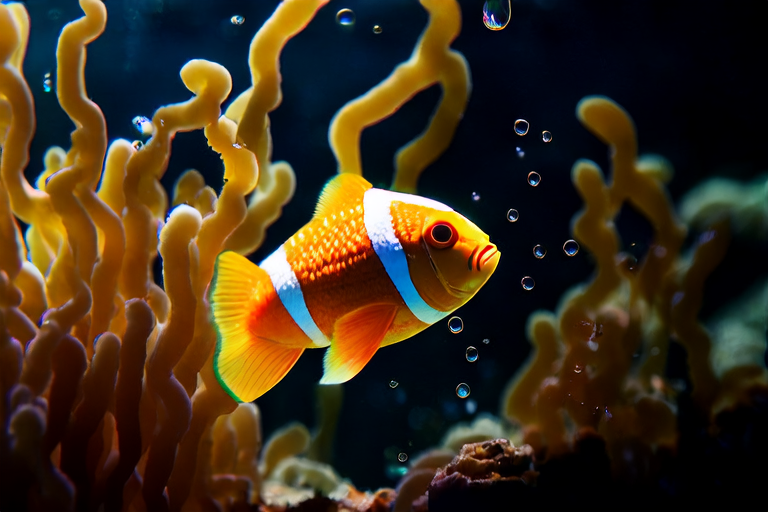A Comprehensive Guide to Caring for Clownfish
Clownfish, also known as anemonefish, are one of the most popular and recognizable saltwater aquarium fish. This guide will provide you with all the information you need to care for your clownfish properly.
Basic Information and Types of Clownfish
Clownfish are small, colorful fish that live in symbiosis with sea anemones. They are native to the tropical waters of the Indo-Pacific region. There are about 30 species of clownfish, with the most popular being the orange-and-white-striped clownfish (Amphiprion percula) and the maroon clownfish (Premnas biaculeatus). Other popular species include the Percula clownfish, the Ocellaris clownfish, the Tomato clownfish, and the Skunk clownfish.
Best Practices for Setting Up an Aquarium
To create a suitable environment for your clownfish, you should follow these best practices:
- Water Temperature: The ideal water temperature for clownfish is between 78°F and 82°F (25°C to 28°C).
- pH Level: The pH level should be maintained at 8.1 to 8.4.
- Filtering System: A good filtering system is essential for maintaining clean and healthy water. A combination of mechanical, biological, and chemical filtration is recommended.
- Water Flow: Clownfish prefer moderate water flow, so you should avoid strong currents.
- Substrate: A sandy substrate is ideal for clownfish, as it mimics their natural habitat.
- Hiding Places: Provide plenty of hiding places, such as rocks and caves, to help reduce stress and promote natural behavior.
Proper Diet and Feeding Frequency
Clownfish are omnivorous and can eat a variety of foods, including brine shrimp, mysis shrimp, bloodworms, and marine algae. You should feed them once or twice a day, providing only as much food as they can consume within a few minutes. Overfeeding can lead to poor water quality and health problems.
Maintaining Clean and Healthy Water
To maintain clean and healthy water, you should perform regular water changes, typically 10-20% of the tank volume every week. Additionally, you should monitor water parameters such as ammonia, nitrite, and nitrate levels, and adjust them as needed. Regular cleaning of the filter and substrate is also important to prevent the buildup of debris and harmful bacteria.
Behavioral Habits and Disease Prevention and Treatment
Clownfish are social animals and often live in pairs or groups. They are generally peaceful and can coexist with other peaceful fish. However, they may become territorial if space is limited. To prevent disease, it’s important to maintain optimal water conditions and quarantine new fish before introducing them to the main tank. If your clownfish shows signs of illness, such as lethargy, loss of appetite, or abnormal swimming, you should consult a veterinarian or experienced aquarist for proper diagnosis and treatment.
Coexisting with Other Marine Species
When choosing tankmates for your clownfish, it’s important to consider their temperament and size. Clownfish can coexist with other peaceful fish, such as damsels, tangs, and wrasses. However, they may become aggressive towards other clownfish if space is limited. It’s also important to avoid keeping clownfish with large, predatory fish that may view them as prey. Additionally, clownfish can live with sea anemones, which provide protection and shelter for the fish. However, not all clownfish species can live with anemones, so research is necessary before adding anemones to your tank.
